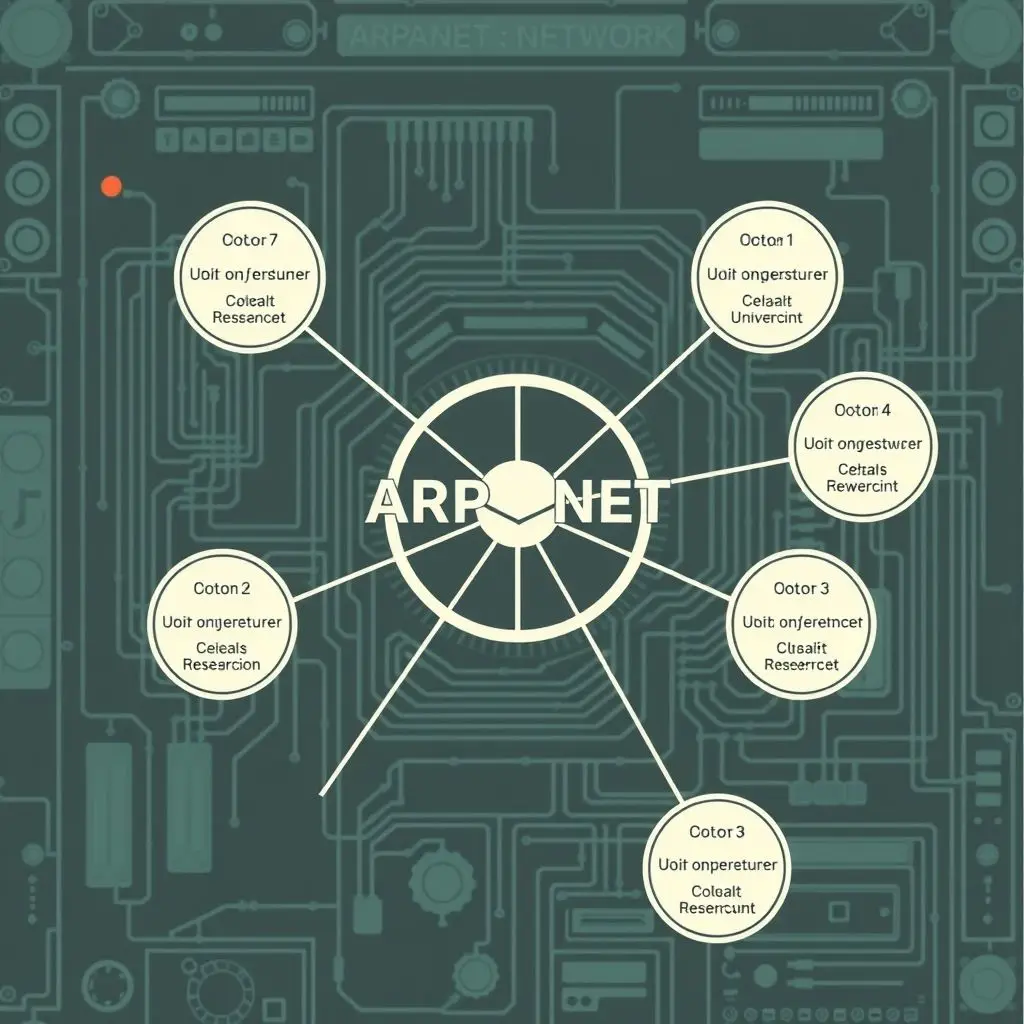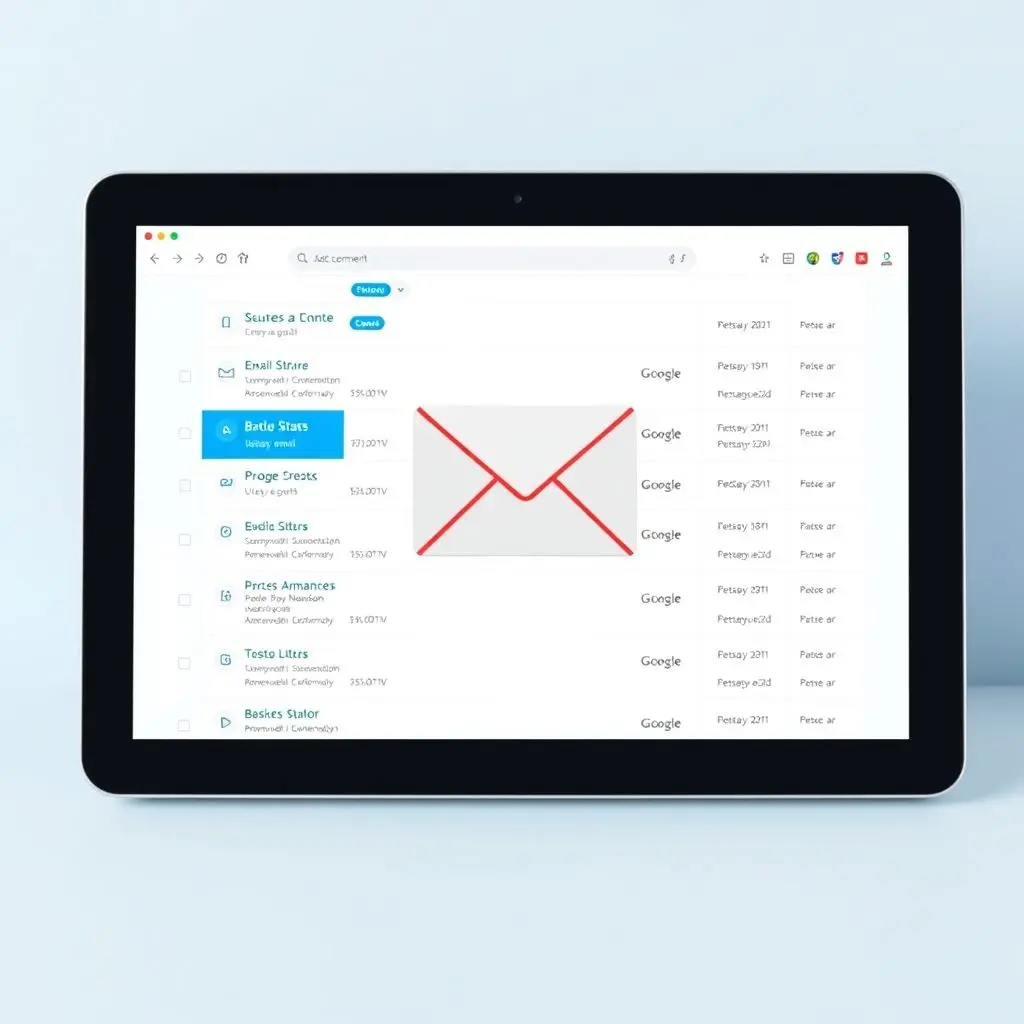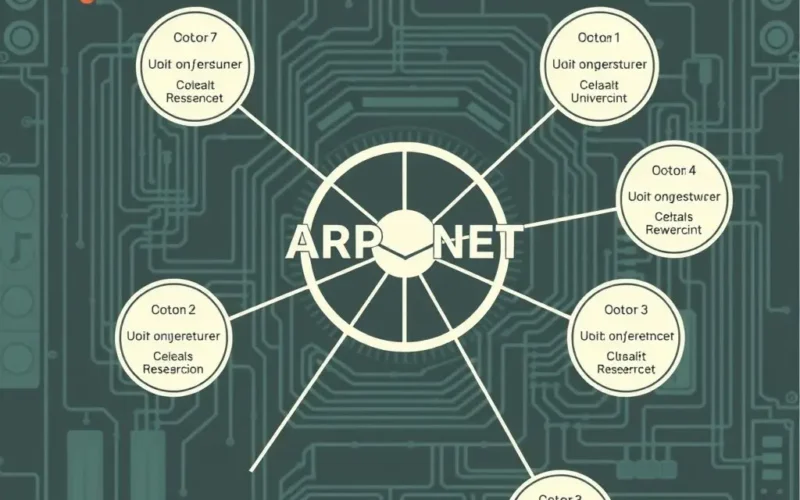We all know it, use it, and sometimes dread it: email. It’s the backbone of digital communication, flooding our inboxes daily with everything from vital work messages to tempting newsletters (like the ones we’d recommend!). But have you ever paused to think about where this ubiquitous tool actually came from? How did we go from messages confined to a single computer to sending them across networks, around the globe?
The story begins not in a sleek Silicon Valley startup, but in a relatively quiet corner of technological history, over half a century ago. It was a time when computers were gargantuan machines, connected by what was then a revolutionary, albeit small, network called ARPANET.
Table of Contents
A Network Before Its Time: The ARPANET Context
In the late 1960s, the Advanced Research Projects Agency Network, or ARPANET, was a pioneering computer network established by the U.S. Department of Defense. Its primary goal was to link research institutions and universities, allowing them to share computing resources and information. It was an early precursor to the internet as we know it, connecting a handful of powerful computers across different locations.

Communication on these early systems primarily involved users logged into the *same* computer, leaving messages for one another in shared files or directories. Sending a message to someone on a *different* computer was a complex, often manual process, involving copying files and complex transfer protocols.
Ray Tomlinson: The Engineer Who Connected Us
Enter Ray Tomlinson. Working for Bolt Beranek and Newman (BBN), a company heavily involved in developing the ARPANET, Tomlinson was tasked with improving the network’s capabilities. He was working on a program called SNDMSG, which allowed users to send messages to other users logged into the *same* time-sharing computer.
Tomlinson had a seemingly simple, yet profoundly challenging, idea: what if you could use this messaging concept to send a message not just to another user on your own machine, but to a user located on an entirely different machine connected to ARPANET?

This wasn’t just a minor tweak; it required a fundamental shift in how messages were addressed and routed. You couldn’t just address a message to a username anymore, because that username might exist on multiple machines. You needed a way to specify *both* the user and the machine they were on.
The Birth of the @ Symbol Address
Tomlinson’s genius lay in finding a simple, elegant solution to this addressing problem. He needed a separator – a distinct character that could clearly delineate the user’s name from the name of their host computer. This character needed to be something that wouldn’t typically appear in usernames or computer names at the time, avoiding ambiguity.
Looking at the standard keyboard of his Teletype Model 33 terminal, he surveyed the available symbols. Many were letters, numbers, or punctuation used in names or programming commands. He needed something unique.
He landed on the “@” symbol. Already present on keyboards, the at sign had historical uses (like denoting price per unit, as in “10 apples @ $1 each”) but wasn’t being used within the syntax of system names or user IDs on ARPANET. It perfectly represented the concept of a user being “at” a specific host machine.

It’s often said he chose it randomly, and while the *selection process* might have involved scanning the keyboard for an unused symbol, the *choice* itself was deliberate in its purpose: to serve as that essential separator.
The First Email Message
With the addressing scheme figured out (user@host), Tomlinson modified both the SNDMSG program (for sending) and the Readmail program (for reading) to handle messages directed to remote machines. He connected his own terminal to two different computers in the same room: TENEX.BBN-TENEXA and TENEX.BBN-TENEXB.
For his first test message, sent in late 1971 (often cited as October), Tomlinson famously sent the message to himself, from one machine to the other. The exact content of that first message is lost to history, or at least, Tomlinson himself couldn’t recall it precisely, though he speculated it was likely a string of nonsense characters like “QWERTYUIOP” to test the system rather than meaningful text.
And just like that, from a simple test between two machines in one room, the concept of inter-computer messaging – email – was born.
See the Story in Under a Minute!
Sometimes, the best way to grasp a cool tech history moment is with a quick visual. Check out this short video that captures the essence of Ray Tomlinson’s groundbreaking work and the birth of the @ symbol!
Pretty neat how such a fundamental tool emerged from a single, focused engineering challenge, right?
The Legacy: From ARPANET to Your Inbox
Tomlinson’s simple invention rapidly gained traction on ARPANET. It provided a quick, efficient, and asynchronous way for researchers and engineers to communicate, share ideas, and collaborate, regardless of whether they were online at the same time. It was significantly faster and more convenient than traditional mail or even phone calls for sharing digital information.

As ARPANET evolved into the internet, email grew with it. Protocols were standardized, software improved, and soon, email wasn’t just for researchers; it became a tool for businesses, then eventually, for everyone with internet access.
The system established by Tomlinson – user@host – remains the fundamental addressing scheme for email globally. Billions of emails are sent every day, all relying on that basic structure defined over 50 years ago.
Frequently Asked Questions About Email’s Origin
Who invented email?
The generally accepted answer is Ray Tomlinson, who in 1971 created the first system capable of sending messages between users on different computers on the ARPANET network. He also introduced the use of the “@” symbol to separate the user name from the host computer name.
When was the first email sent?
The first inter-computer email message is widely reported to have been sent in late 1971, likely in October.
What was the first email message?
Ray Tomlinson himself could not recall the exact content of the first test message. He speculated it was likely a string of random characters, such as “QWERTYUIOP,” used purely to test if the system worked.
Why did Ray Tomlinson choose the @ symbol?
He needed a character to separate the user name from the host computer name in an address (user@host). He chose the “@” symbol because it was present on the standard keyboard and, crucially, was not already in common use within usernames or computer names on the network, making it a clear, unambiguous separator.
Was email invented before the internet?
Yes, in a sense. Email was invented on ARPANET, which was a precursor network to the global internet we use today. ARPANET demonstrated many of the concepts that would later form the foundation of the internet, including packet switching and network protocols.
A Foundational Piece of the Digital Age
It’s remarkable to think about how a specific technical challenge – how to address a message to a user on a different machine – led to the creation of a communication method that defines our digital lives. Ray Tomlinson’s quiet innovation, including his clever choice of the ‘@’ symbol, didn’t just connect a few researchers; it laid the groundwork for the way billions of people communicate daily.
From that single, forgotten test message, a global phenomenon grew. It’s a powerful reminder that even seemingly small, focused engineering solutions can have world-altering impacts. The next time you type an email address, remember that little ‘@’ symbol is a direct link back to a pivotal moment in tech history.


